Recent Articles
Popular Makes
Body Types
2017 Acura RDX Road Test and Review
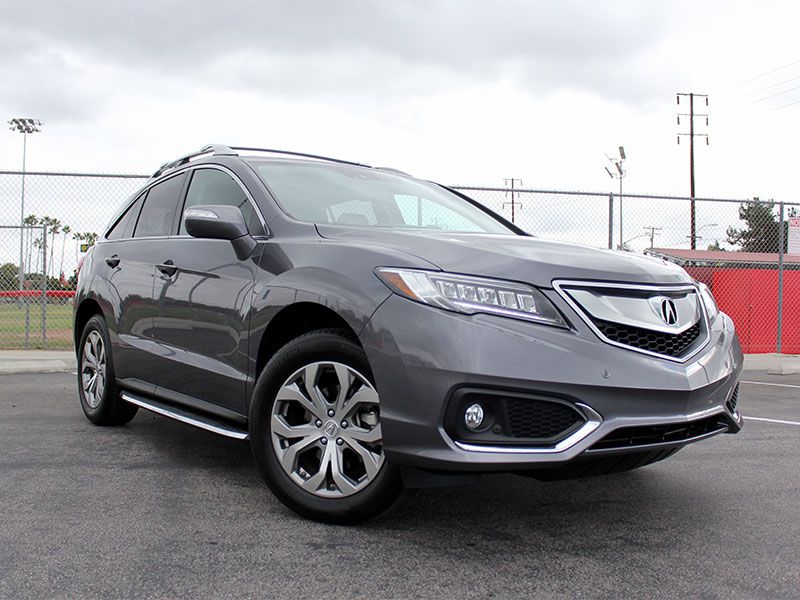
2017 Acura RDX exterior front angle ・ Photo by Miles Branman
Today's consumers are asking not “which car should I buy,” but rather “which crossover/SUV should I buy?” Your neighbor’s next automotive purchase is pretty much guaranteed to ride higher than his last.
Consumer trends being what they are, the crossover segment has never been so packed with quality products. Specifically, the luxury compact end of the market is teeming with good options. Virtually every premium brand has put forth a new or redesigned model in the last few years, but few of them have participated in the segment for a decade.
Here, Acura stands apart. Since 2007, the RDX has paired Honda reliability with enhanced styling, comfort, and technology. Fresh from a 2016 redesign, Acura’s entry-level crossover attempts to stay relevant with ample features for the money. The next RDX isn't due until 2018, so let's find out if the current 2017 model is still able to stand on its own.
RDX or CR-V: What’s Different?
Though Acura’s RDX is based on the same platform as Honda’s 2016 CR-V, it would be a mistake to simply consider the RDX a CR-V with new bodywork. Most significantly, the 2017 RDX uses a 3.5-liter V6 while the CR-V makes do with a 2.4-liter 4-cylinder. That means the RDX adds weight, but is considerably more powerful. While there are similarities in cabin layouts, the RDX uses higher quality materials and can be configured with a number of exclusive convenience features. Finally, the RDX features a bold design that may still be on the conservative end of its competitive set, but is still more eye-catching than the outgoing 2016 Honda CR-V.

Clean Cut
Acura’s 2016 makeover gave the RDX contemporary curb appeal without going overboard on flash. Its standard “Jewel Eye” LED headlights are particularly attractive, as are the available 18-inch machined alloy wheels. Front and rear views are favorable to the RDX’s profile, due to its jutting chrome running board that seems unnecessary for such a low-riding model. While we prefer Acura’s angular styling on the MDX’s larger chassis, the RDX’s understated beauty is ideal for buyers who don’t need their crossover to make a statement. If you wish to make more of a splash in your respective suburban community, we’d suggest the Jaguar F-PACE or Lexus RX.
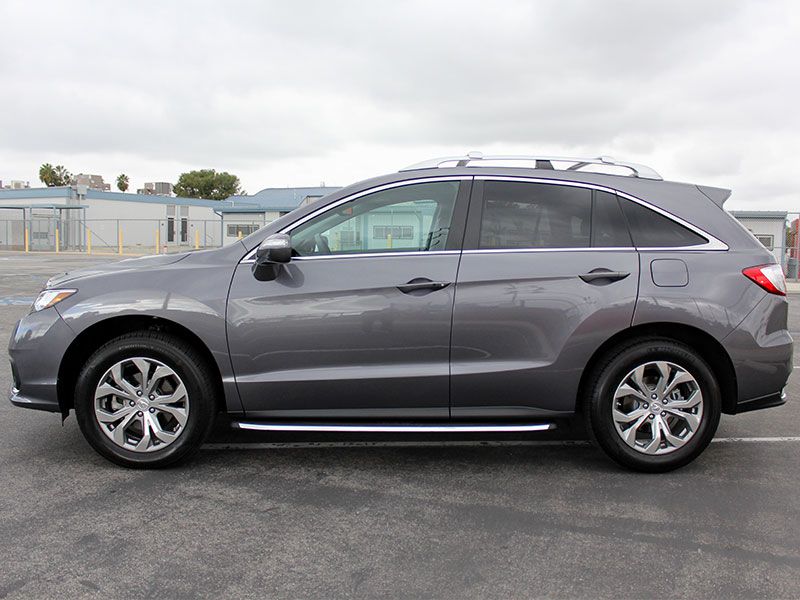
Photo by Miles Branman
Cabin and Ride Quality
The RDX’s exterior refinement is complemented by a superbly comfortable, sleek interior. Rich leather sport seats are designed to keep passengers fresh for long hauls, but even short stints behind the wheel are serene—thanks in part to a well-insulated cabin. Ride quality is smooth, with soft damping to mitigate road harshness, and passenger volume is ample. Acura’s 4-wheel independent suspension, with MacPherson struts in front and a multilink rear, works well and provides excellent stability through curves. However, as cornering speeds increase or as maneuvers become more aggressive, the RDX becomes less settled, and its lack of steering feel (via an ambiguous electric-assisted rack) doesn’t inspire driver confidence. As an example of premium hardware, the 2017 Acura RDX succeeds in providing upscale appointments and ride refinement but stops short of challenging BMW, Mercedes-Benz, or Audi as a luxurious, high-performance crossover.
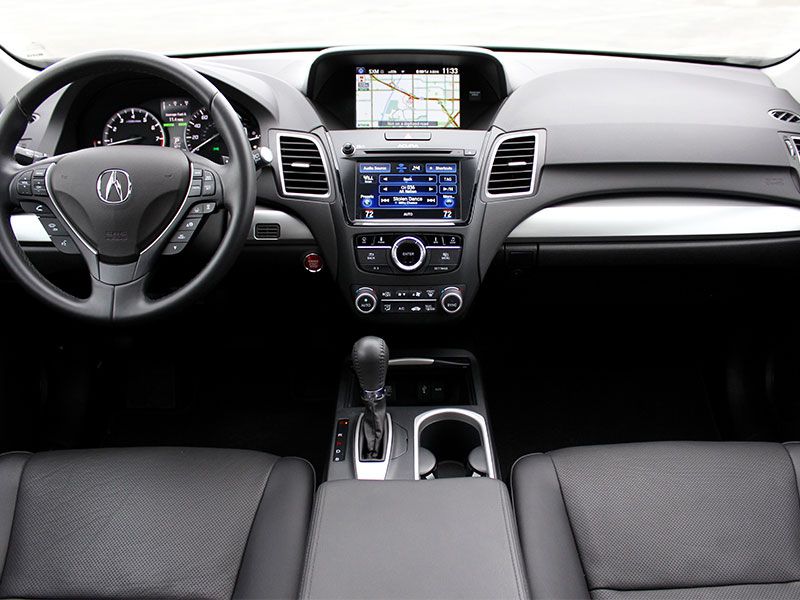
Photo by Miles Branman
Features Galore
Unlike rivals that strip down standard equipment to gouge with option packages, Acura fits the 2017 Acura RDX with stellar baseline goodies and available extras that are attractively priced. Every new RDX ships with LED automatic headlights, 18-inch aluminum alloy wheels, a power moonroof, heated side mirrors, LED turn signals, rear privacy glass, 10-way power driver’s seat, 4-way power passenger’s seat, heated, leatherette front seats, leather-wrapped steering wheel and shift knob, dual-zone automatic climate control, keyless, smart entry, pushbutton ignition, auto-dimming rearview mirror, 7-speaker sound system, 5-inch color information display, and a multiview rear camera. From that generous baseline, the $3700 Technology package includes perforated leather sport seats and cabin trim, an 8-way power front passenger seat, multifunction touch display, 8-inch infotainment, voice recognition with Siri Eyes Free, 10-speaker premium audio system, Acura navigation with 3D maps, real-time traffic, and voice recognition, blind-spot monitoring, and rear cross-traffic alert. For all the bells and whistles, Acura’s Advance package ($6650) bundles all the aforementioned features with AcuraWatch Plus safety technologies, fog lights, auto-dimming side mirrors, parking sensors, remote engine start, 18-inch machined alloy wheels, rain-sensing wipers, and heated/ventilated front seats. With every option, including the $1500 all-wheel-drive system, the 2017 RDX climbs to $44,460 (including $940 in destination fees), which is much less expensive than its similarly loaded rivals.
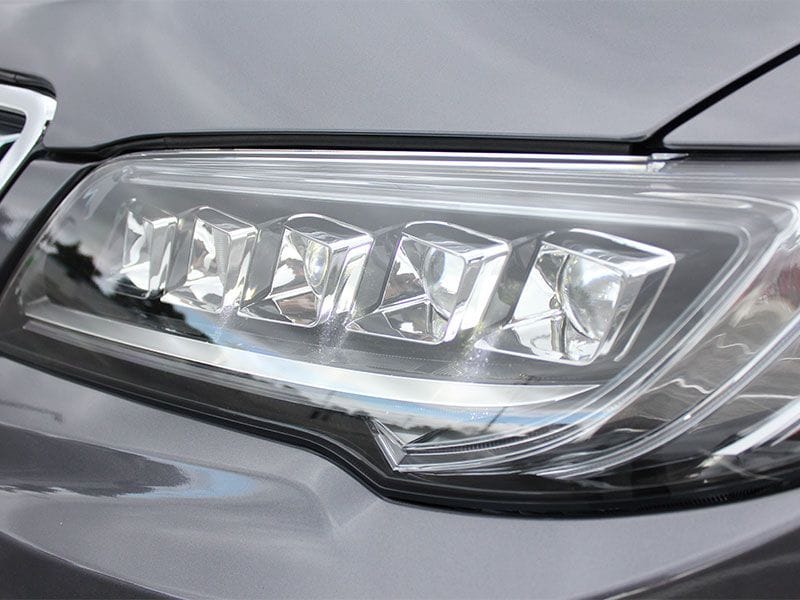
Photo by Miles Branman
Safety Tech
The 2017 Acura RDX has driver and passenger dual-stage airbags, side-curtain airbags, stability and traction control, brake assist, and ABS. Acura’s ACE (Advanced Compatibility Engineering) body structure is designed to distribute energy more evenly in a frontal collision, including off-set impacts that are known to cause more severe passenger injury. The AcuraWatch Plus package ($1300) bolsters the RDX’s safety tech with adaptive cruise control, collision-mitigation braking, lane-keeping assist, lane-departure warning, and forward-collision warning. Honda’s adaptive cruise control may not be the smoothest system we’ve ever tested, but its lane-keeping function is remarkably adept at detecting lane markings and keeping the vehicle in-line without ping-ponging the car back and forth.
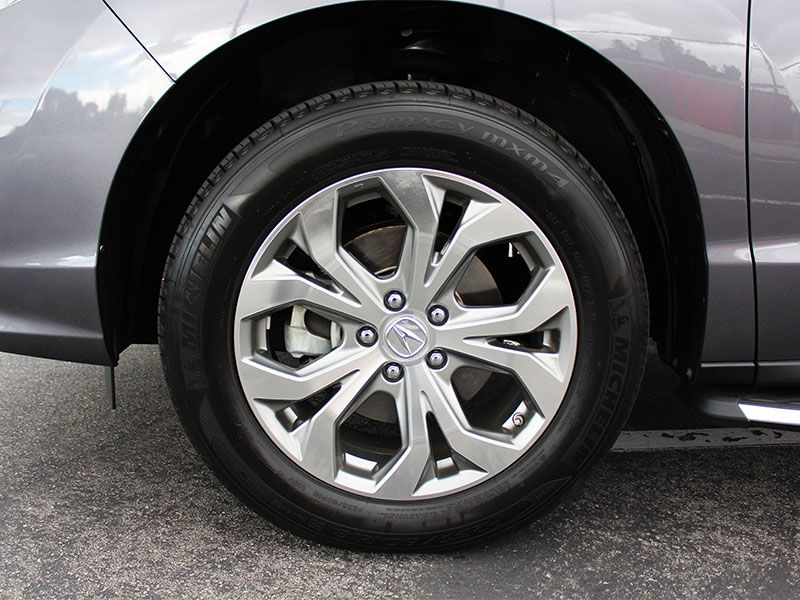
Photo by Miles Branman
Secret Weapon
Completely betraying the 2017 Acura RDX’s humble exterior is its tenacious engine. While the rest of the industry is in a rush to downsize, Acura’s 3.5-liter V6 trades a few mpg for an extra helping of power. The aluminum-block V6 sends 279 horsepower and 252 lb.-ft. of torque through a 6-speed automatic transmission to the front wheels (or all four wheels) for some seriously impressive acceleration. The 2017 RDX hits 60 mph in just 6.2 seconds, which makes the RDX one of the quickest vehicles in its class, especially when comparing the base-spec Acura with any equivalently entry-level challenger. Shifts are acceptably quick and smooth in automatic mode, but the steering wheel-mounted paddles hesitate in response to manual inputs. It’s a shame the RDX’s other performance characteristics (braking, handling, and steering) aren’t as exhilarating, but its V6 is still a standalone thrill. Passing power is in abundance, and it's fun to blow past most hot hatchbacks. Acura will almost certainly introduce a turbocharged 4-cylinder motor with its next-generation RDX, so if you prefer the melodious clamor of a naturally aspirated V6, this is your last chance.
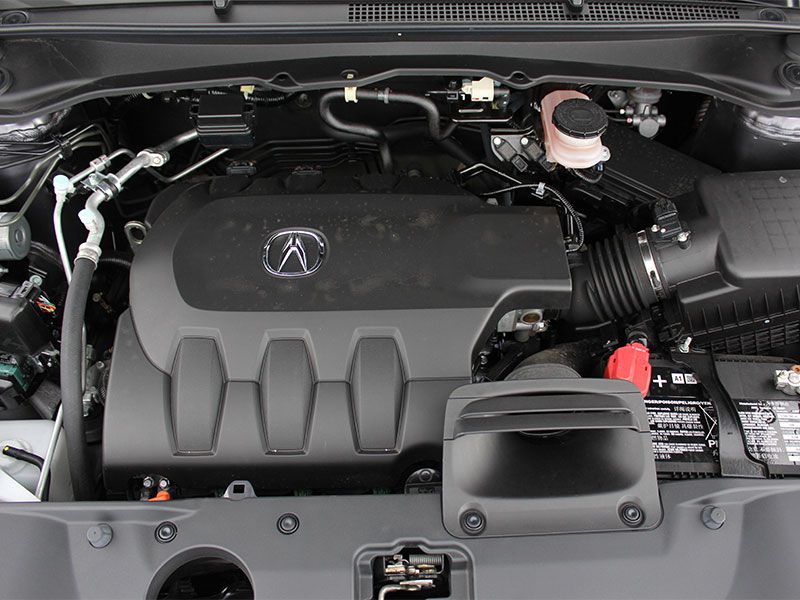
Photo by Miles Branman
Efficiency
As one might expect, more displacement means more fuel consumption. Still, the RDX manages EPA figures of 20 mpg city, 28 mpg highway, and 23 mpg combined mpg in front-wheel-drive guise, and gives up only a single mpg across the board if you prefer AWD. Amongst non-luxury compact crossovers, those figures are sub-par; amongst the RDX's heavier, feature-laden competition, they are much better.
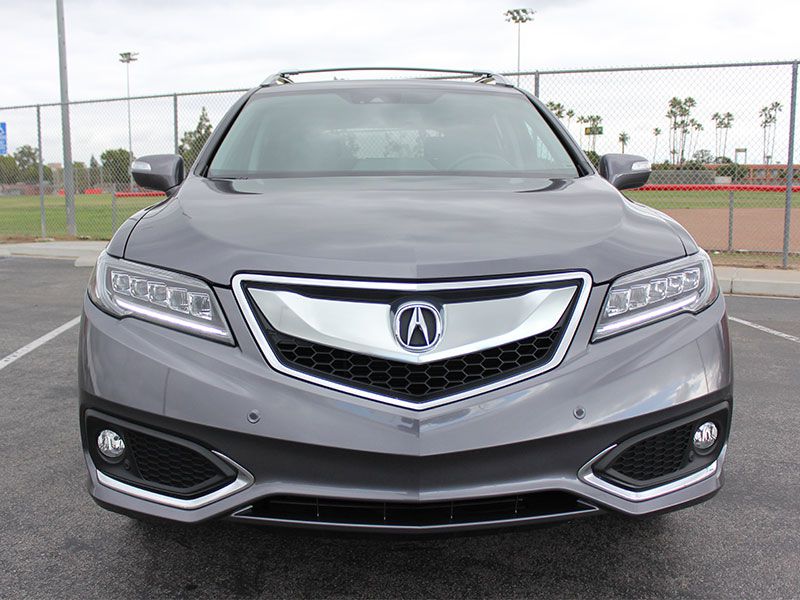
Photo by Miles Branman
Highs and Lows
- A supple ride over rough road surfaces
- Ergonomic, comfortable seats for every passenger
- An astonishingly potent engine
- Attractive option packages and pricing
- Imprecise driving dynamics
- Low-resolution multimedia displays
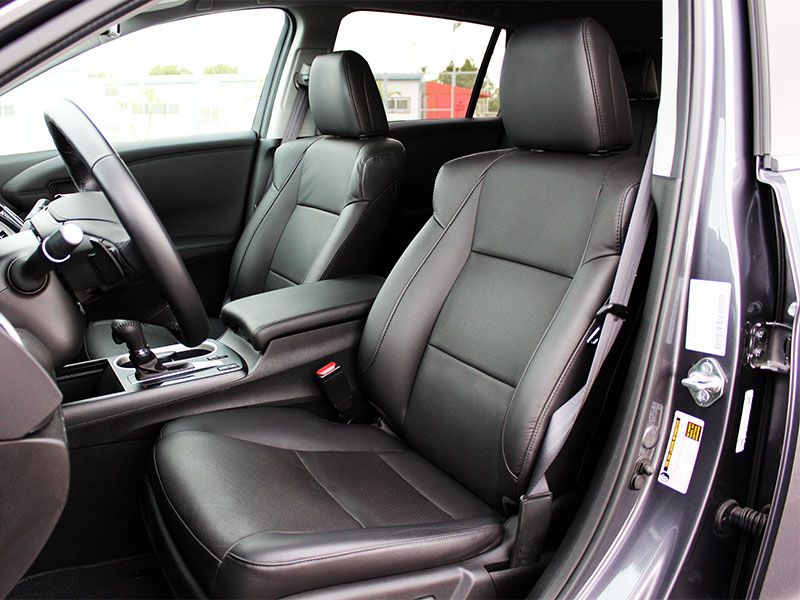
Photo by Miles Branman
Competition
The luxury compact crossover segment is so crowded, we’ll split the field into two brackets: general segment challengers and price-bracketed direct rivals. While Acura would like the RDX to be grouped among elite luxury brands like BMW, Audi, Mercedes-Benz, and Porsche, it has yet to piece together a robust, high-end model range. However, its aggressive pricing means the Japanese automaker can steal would-be buyers from these segment leaders. The 2017 Acura RDX is an affordable alternative to BMW’s X3, Audi’s Q5, Mercedes-Benz’s GLC, Porsche’s Macan, Cadillac’s XT5, Lexus’ RX, Jaguar’s F-Pace, and Land Rover’s Discovery Sport. Most of these vehicles have more brand cachet than Acura (and some of them drive better than the RDX), but few deliver higher quality fit and finish. More direct rivals include Infiniti’s QX50, Lincoln’s MKX, Buick’s Envision, and Volvo’s XC60. Among this junior varsity squad, Acura’s RDX is clearly the team captain. It’s handsome shape, smooth ride, and extensive feature set trump close rivals and should make “elite-lux” buyers think twice before forking over several thousand dollars more.
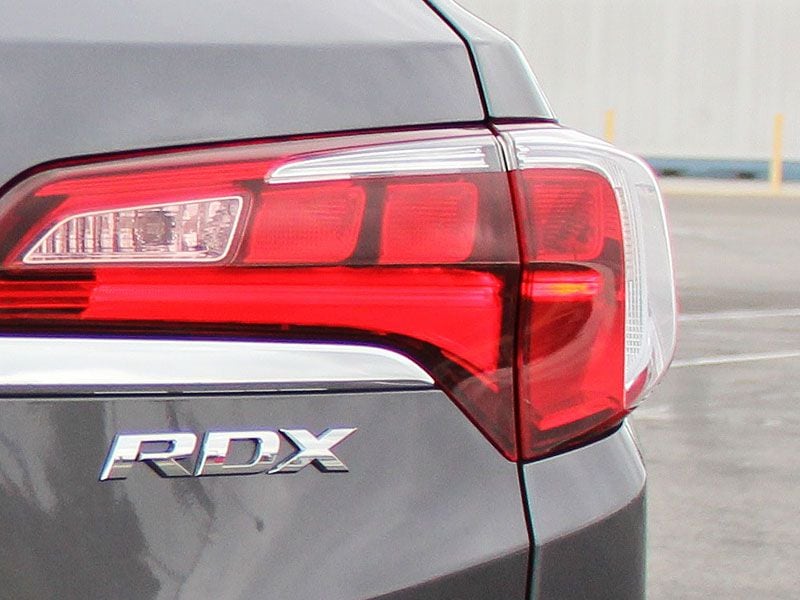
Photo by Miles Branman
Our Take
There are more attractive and better-handling crossovers than the 2017 Acura RDX, but if you factor in their lofty price tags and generallly less-dependable nature (beyond four years of warranty protection), their initial appeal may turn to apprehension. Comfort, reliability, and affordability are in this Acura's camp, making the RDX a wise choice.
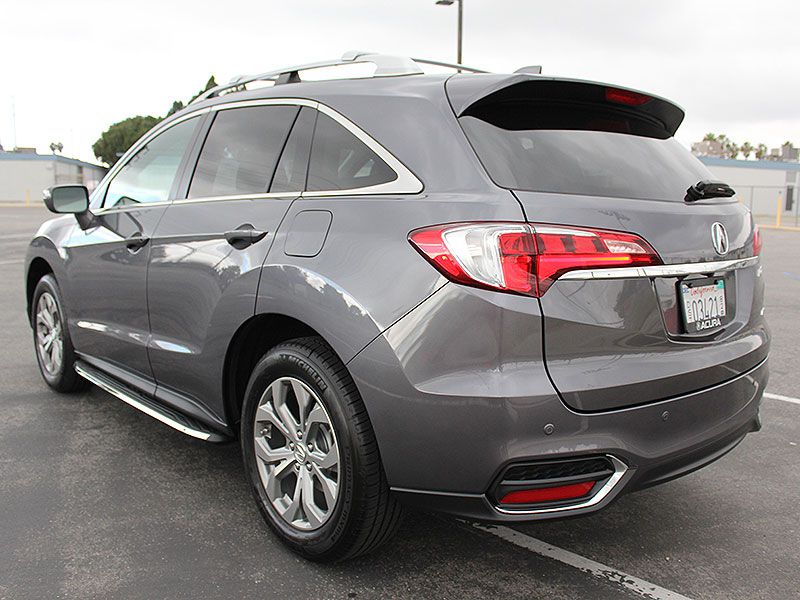
Photo by Miles Branman